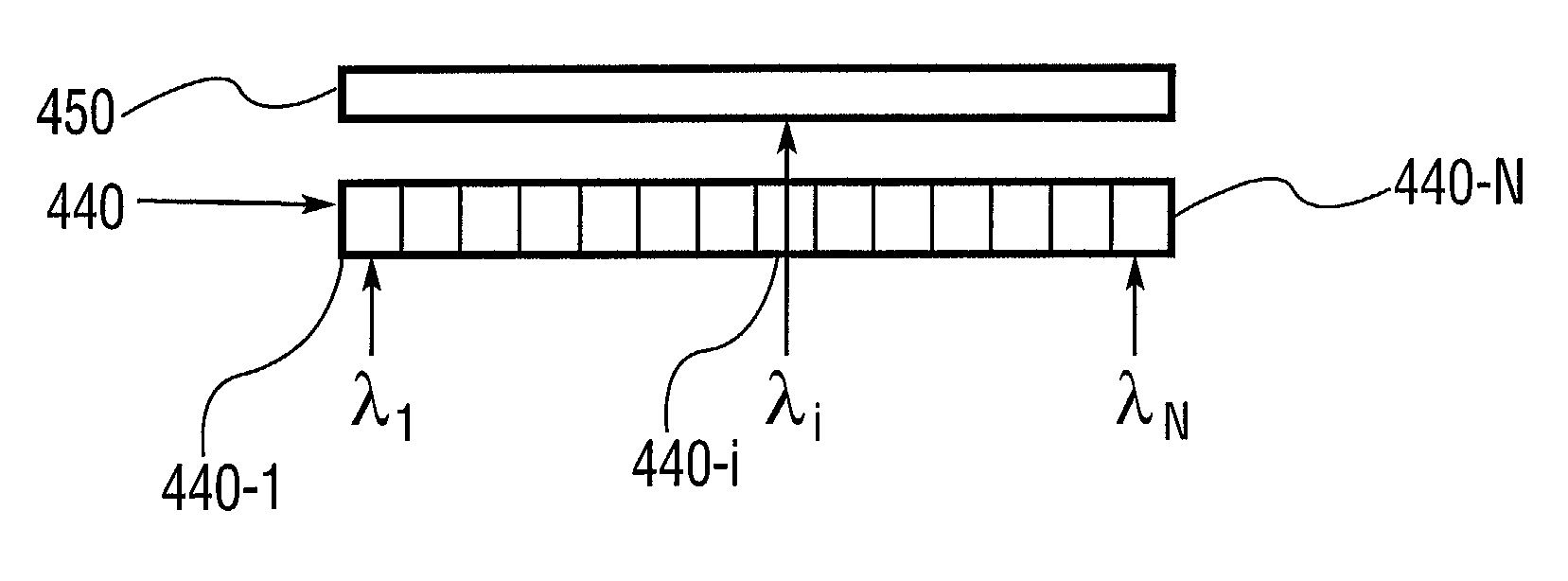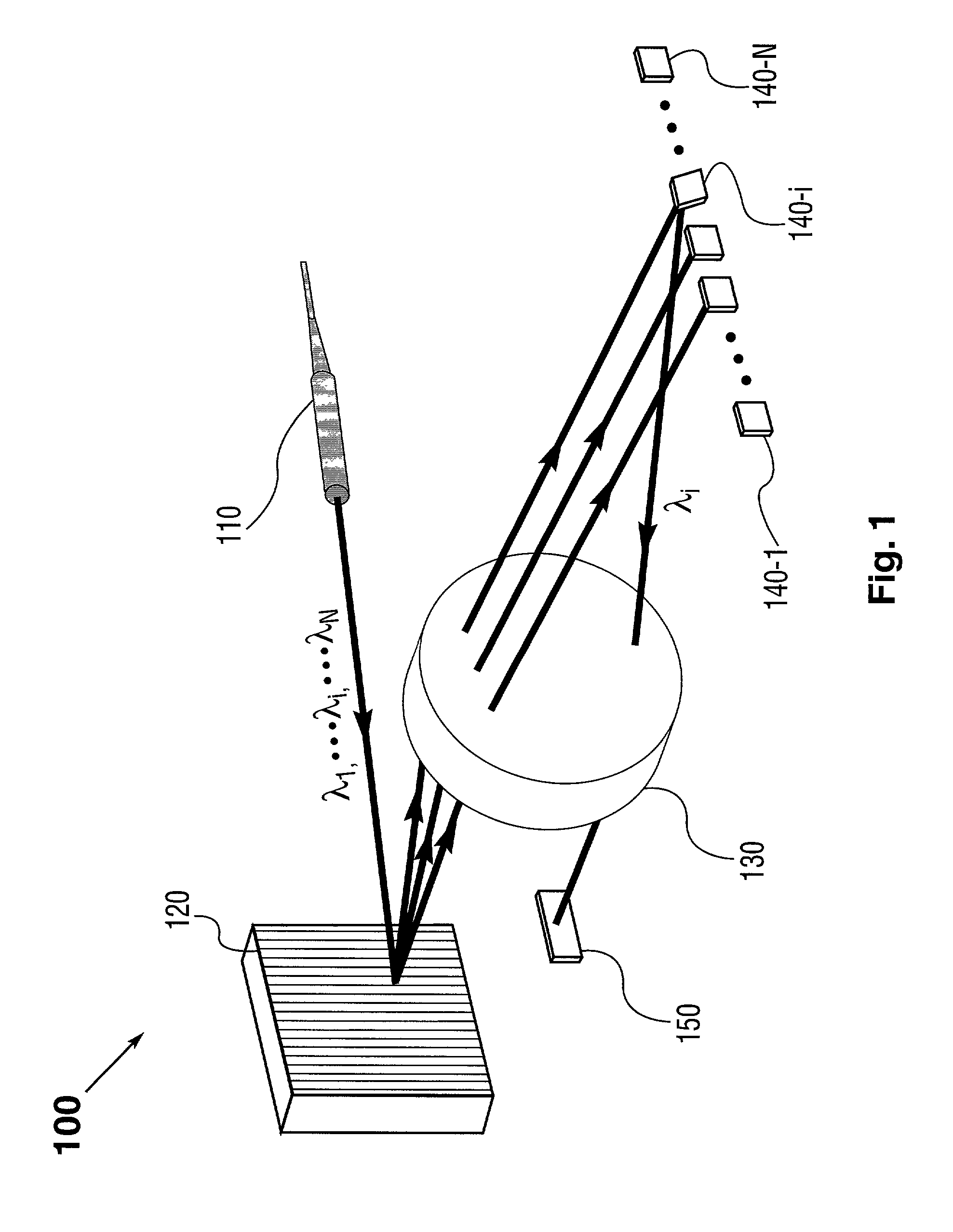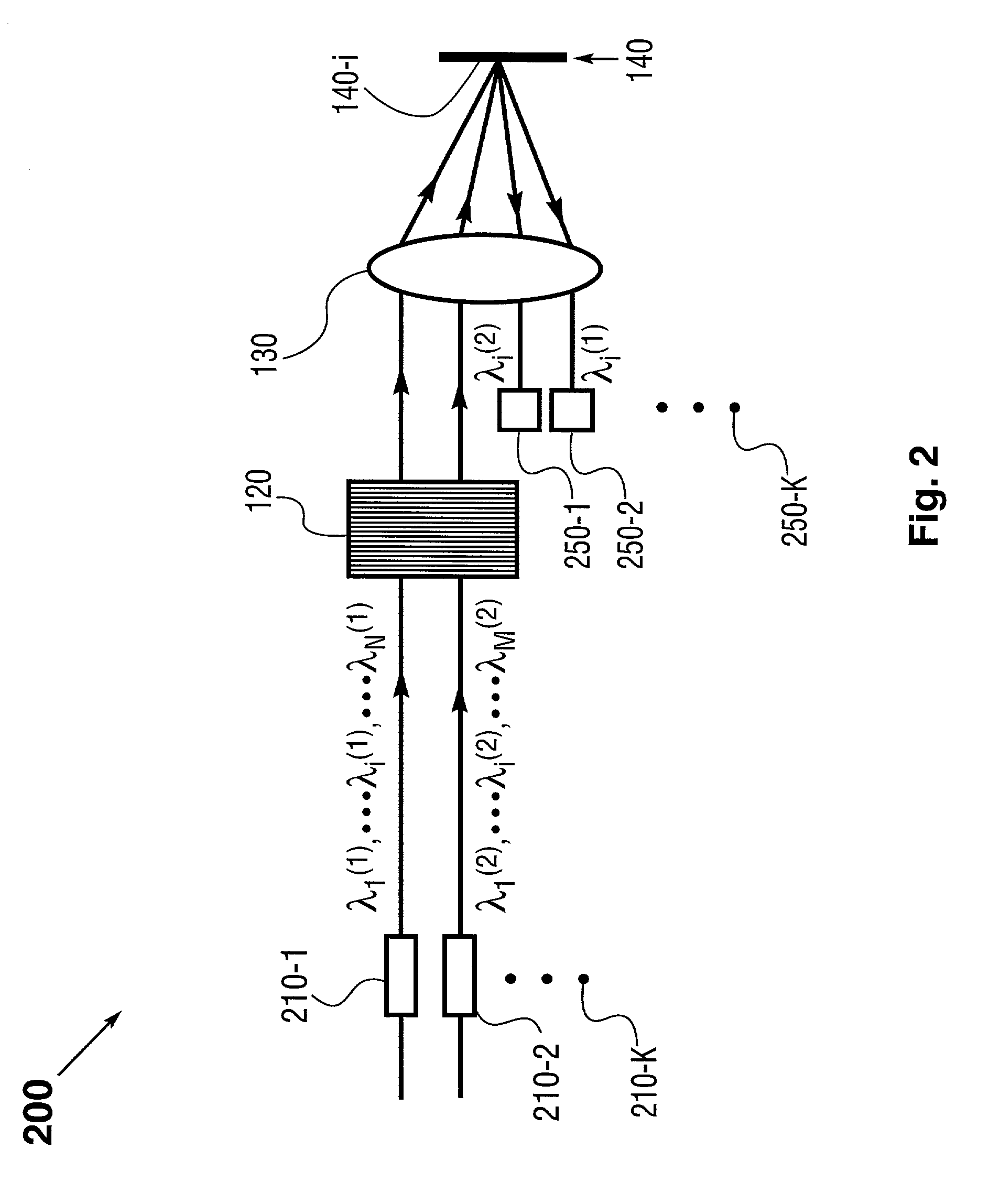Optical spectral power monitors employing time-division-multiplexing detection schemes
a detection scheme and spectral power monitor technology, applied in the direction of optical radiation measurement, instruments, spectrometry/spectrophotometry/monochromators, etc., can solve the problems of unsuitable optical networking applications, cumbersome size and operation, and high cost of spectral power monitors, so as to enhance spectral resolution, simple and cost-effective, and great versatility
- Summary
- Abstract
- Description
- Claims
- Application Information
AI Technical Summary
Benefits of technology
Problems solved by technology
Method used
Image
Examples
first embodiment
[0020]FIG. 1 shows a perspective view of an optical spectral monitoring apparatus according to the present invention. By way of example to illustrate the general principles of the present invention, optical spectral power monitoring apparatus 100 comprises an input port 110 which may be a fiber collimator; a wavelength-disperser 120 which in one form may be a diffraction grating; a beam focuser 130 which may be a focusing lens; and an array of beam-manipulating elements 140 which in one form may be micromirrors 140-1 through 140-N. The optical spectral monitoring apparatus 100 may further include an optical detector 150, which may be a photodiode in conjunction with an associated detection circuit.
[0021]For purposes of illustration and clarity, only a select few (e.g., three) of the spectral channels, along with the input multi-wavelength optical signal, are graphically illustrated in FIG. 1 and the following figures. It should be noted, however, that there can be any number of the ...
second embodiment
[0026]The embodiment of FIG. 1 may be further extended to provide optical spectral power monitoring of a plurality of input multi-wavelength optical signals. Depicted in FIG. 2 is a schematic side view of an optical spectral power monitoring apparatus of the present invention, pertaining to this situation. (The schematic side and top views in FIG. 2 and the following figures are presented with respect to the perspective view of FIG. 1). By way of example, optical spectral power monitoring apparatus 200 of FIG. 2 may make use of the architecture along with a number of the elements used in FIG. 1, as indicated by those elements labeled with identical numerals. This embodiment implements a plurality of input ports 210-1 through 210-K (K≧2), which may be in the form of fiber collimators. Each input port may transmit an optical signal. As a way of example, a first input port 210-1 may transmit a first multi-wavelength optical signal containing wavelengths λ1(1) through λN(1), and a secon...
third embodiment
[0028]It is known that the diffraction efficiency of a diffraction grating may be polarization-dependent. For instance, the diffraction efficiency of a grating in a standard mounting configuration may be higher for p (or TM) polarization that is perpendicular to the groove lines on the grating than for s (or TE) polarization that is orthogonal to p-polarization, or vice versa. Such polarization-sensitive effects may become appreciable for a grating with a large number of groove lines (per unit length). Hence, in applications where the polarization-sensitive effects are deemed undesirable, a polarization diversity scheme may be implemented in the present invention. FIG. 3 depicts a schematic side view of an optical spectral power monitoring apparatus of the present invention, employing an array of micromirrors as the beam-manipulating elements in a polarization diversity scheme.
[0029]By way of example, optical spectral power monitoring apparatus 300 of FIG. 3 may make use of the gene...
PUM
 Login to View More
Login to View More Abstract
Description
Claims
Application Information
 Login to View More
Login to View More - R&D
- Intellectual Property
- Life Sciences
- Materials
- Tech Scout
- Unparalleled Data Quality
- Higher Quality Content
- 60% Fewer Hallucinations
Browse by: Latest US Patents, China's latest patents, Technical Efficacy Thesaurus, Application Domain, Technology Topic, Popular Technical Reports.
© 2025 PatSnap. All rights reserved.Legal|Privacy policy|Modern Slavery Act Transparency Statement|Sitemap|About US| Contact US: help@patsnap.com



